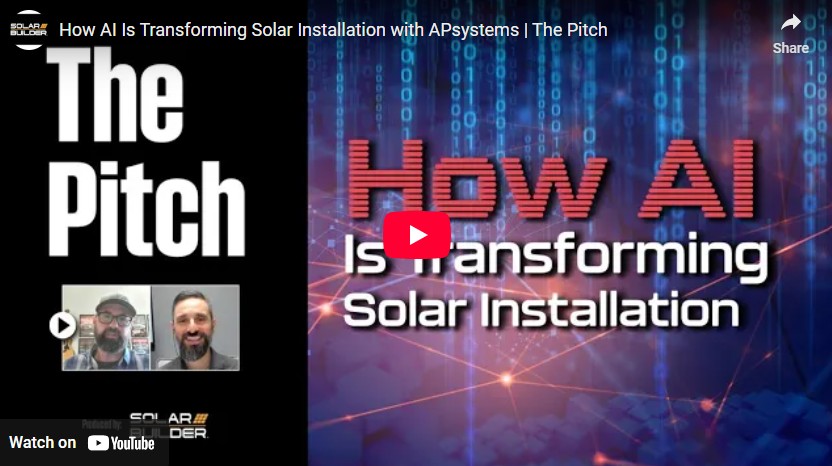Understanding a PPA
Power purchase agreements make buying solar energy more cost-effective for customers and a better fit in their future plans. Knowing how to approach them encourages building better projects.
For decades, businesses and homeowners alike have installed solar panels on their roofs and begun generating their own power to offset their reliance on local utilities. It was not necessarily a decision based on good economics; the panels were expensive and few contractors had this expertise. But for some organizations, “doing the right thing” outweighed the cost of ownership.
Today, the solar landscape is quite different. Prices for PV panels have dropped considerably, and contractors are becoming more adept at installing solar projects — all at a time when energy prices are as volatile as ever. On top of that, more contractors are in the market to help install solar energy projects.
 Because of these new conditions, the popularity of solar implementations has risen dramatically. The benefit is clear: Organizations that implement solar energy see utility cost reductions almost immediately.
Because of these new conditions, the popularity of solar implementations has risen dramatically. The benefit is clear: Organizations that implement solar energy see utility cost reductions almost immediately.
But it isn’t just about energy cost reduction. Businesses in the private sector can also use solar energy as a market differentiator. They can use it to attract customers that support companies that are “green” or sustainable and/or that use renewable energy.
Colleges and universities implement solar energy to help attract and retain more students; like the private sector, renewable energy can be a differentiator. Cities and counties undertake solar energy projects to create jobs for the local economy. In fact, for 2011, job growth in the solar industry outpaced job growth for the overall economy and this growth is expected to continue through 2012.
How to Finance Projects
Although solar energy projects can be expensive to implement, federal tax incentives — sometimes up to 40 to 50 percent of the total investment — are available to private sector companies to help offset the cost of installation. Section 1603 of the American Recovery and Reinvestment Act (ARRA) of 2009 provided grant funding to help the economics of solar energy projects from 2009 to 2011. Under this program, entities that implemented solar energy during the grant period were eligible to receive payments from the U.S. Treasury in lieu of federal tax credits. These payments would equal 10 to 30 percent of the project’s cost, and businesses could receive payments as soon as 60 days following project implementation.
The ARRA grant period ended on Dec. 31, 2011, which means that entities must once again rely on the federal tax credits to help defray the cost of solar implementations. Unlike the ARRA grants, which paid the entire sum in one payment, federal tax credits are spread over a period of five years. For example, if Company XYZ implements a $2 million solar project (a relatively small installation) in 2012, it might be eligible for tax credits of up to $1 million. These credits would become available in $200,000-annual increments from 2013 through 2017. In short, a company’s “tax appetite” must be large enough to absorb the tax credits over a period of five years.
Public sector organizations that are exempt from these tax incentives, as well as companies whose “tax appetites” are smaller, can take advantage of solar power purchase agreements (PPAs) — a financial arrangement that makes buying solar energy in the public sector more accessible and cost-effective.
Benefits of a PPA
Up to 75 percent of contracted solar projects in the United States happen with the help of a PPA. With several types of PPAs and many nuances to each, it’s important to understand how they work. PPAs can cover projects as small as a residential solar installation up through utility-sized projects. For commercial-sized projects, a third-party provider owns the solar equipment and builds the project on the company’s property. The PPA provider leases space on a company’s property to install the solar equipment, then sells the resulting solar power to the company at a negotiated rate, which is typically less than the organization currently pays the local utility per kilowatt-hour.
Essentially, the PPA provider monetizes the tax credits on behalf of the customer over a term of 20 years or more, depending on the contract. With this arrangement, the company or public sector entity can begin taking advantage of lower-cost solar energy at a fixed, long-term price while eliminating the initial capital investment and ongoing equipment maintenance responsibilities and obligations. In fact, PPAs can sometimes result in positive cash flow from the first day of operation.
Today’s market has been flooded with organizations that are operating as solar PPA providers. As a result, most of these PPA contracts are subject to financing from an investor or financial institution, which can add additional layers and uncertainty to the mix. That is, if the PPA provider is unable to obtain the necessary financing to build and commission the solar project, or if the project’s ROI is not sufficient to satisfy the investor, the solar project may never be completed. In some cases, the contract can be renegotiated, but often, there is no legal recourse for the company that desired a solar installation but did not get it.
How to Find a Reliable PPA Partner
Implementing solar energy, especially under a solar PPA, is a complex process that requires the help of a reliable, dependable provider. Before contracting with any PPA provider, review its qualifications carefully and look for the following hallmarks of a reliable provider:
- Proven track record – Ensure that the provider has the track record and wherewithal to deliver on contracted promises, even when circumstances change. When financing is not a contingency of the contract, if the circumstances change too much, the provider may exercise its option to exit the agreement. Further, you’ll want to be sure that the company has a commitment to the solar industry, and doesn’t appear to be on weak footing that would cause its doors to close.
- Strong balance sheet – Look for a reliable PPA provider that has a strong balance sheet to not only fund the project itself, but also to support the relatively high capital investment required for implementing solar energy projects and the long-term monetization of tax credits. These companies will not need to rely on financial institutions or private investors for debt or tax equity.
- Longevity – Solar PPAs are often long-term (20 years or more) relationships. Ensure that the PPA provider can commit to the entire project term and can continuously sell solar power and provide necessary equipment maintenance and repairs for the length of the contract. Whereas some PPA providers might subcontract or sell these services, look for a reliable PPA provider that can support all contracted obligations over 20 years.
Typically, the less complicated a solar PPA contract and relationship, the more successful a solar project will be. This can help organizations take advantage of lower-cost solar energy, create local jobs, sell more products and attract more customers. Finding the right partner for a solar project is essential because of the complex nature of PPAs and tax incentives. When the economics and partnerships are on target, organizations can confidently implement solar energy for their facilities.
This article was developed from sections of a white paper authored by Siemens. For more information, visit www.ppaforsolar.com.





Comments are closed here.